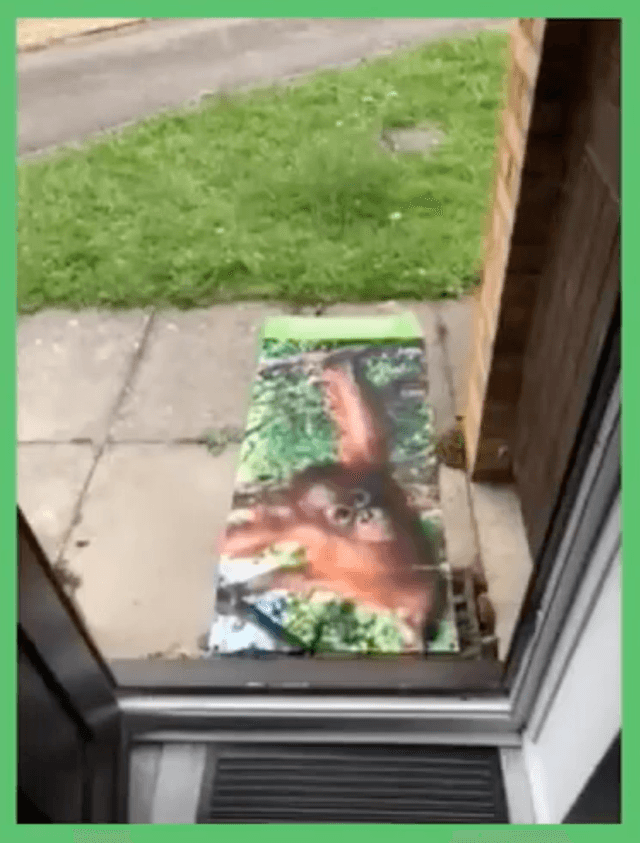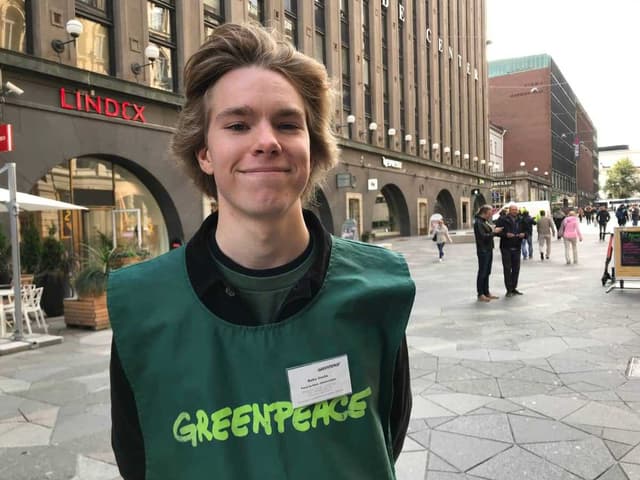Greenpeace: Face-to-face reinvented during the pandemic
- Exhibited by
- Shabby Amini
- Added
- January 27, 2022
- Medium of Communication
- Face-to-face
- Target Audience
- All donors
- Type of Charity
- Environmental
- Country of Origin
- UK
- Date of first appearance
- 2020
SOFII’s view
What a response to unprecedented times! Face-to-face (F2F) has been hugely impacted by the coronavirus pandemic. So, Greenpeace had to think outside the box, but also with compassion, once their F2F fundraisers were allowed back on the streets.
They created a smart door drop and equipped their fundraisers with mats to ensure they met social distancing rules. These changes meant the charity were able to reassure potential donors while engaging in important conversations about climate change and securing all-important sign-ups. What a way to bounce back after three months of lockdown.
Background
Greenpeace first reinvented face-to-face fundraising back in the 1990s (read more about that here) – the era of the Spice Girls, cable TV and Super Mario Brothers. Fast forward to 2020, when the coronavirus pandemic meant Greenpeace had to rethink their strategy to cope in a world where people were shielding and worried about going out.
Summary / objectives
In 2020, social distancing became mandated and we were not only avoiding or keeping our distance from strangers, but even friends and family. For Greenpeace, that meant face-to-face fundraising was pretty much forbidden and their plans to appear at 90-odd festivals such as Glastonbury were cancelled.
However, climate change was still happening and Greenpeace needed, once permitted, to get out there and have conversations about the crisis. This campaign had to overcome quite a few barriers.
Creator / originator
Greenpeace
Special characteristics
The first barrier was that people would possibly be vulnerable or feel unsafe, and therefore wouldn’t welcome someone coming to their door. To overcome this, Greenpeace decided to do a door drop. It included a very nice letter informing the reader when Greenpeace fundraisers would be in the area to talk about climate change.
The charity included a detail of how they planned to do so in a coronavirus-safe manner and, essentially, an opt-out. The door drop included a cute sticker of an orangutan and if recipients didn’t want someone to knock on their door, they could stick the orangutan on their door. The door drop also provided details for a Zoom chat that people could join, giving people who were feeling vulnerable another safe option for getting involved.
The second barrier was that Greenpeace needed to reassure people that their fundraisers would keep to the required social distancing rules and not get too close. As such, all Greenpeace F2F fundraisers would have a mat, again featuring an orangutan, which they would lay out in front of doors. The mat measured one and a half metres and above all acted as a conversation starter, especially as it tied in with their ‘Rang-tan’ campaign about palm oil from 2018 (read more about that here).
Merits
I love Greenpeace because they are always thinking of news ways to do fundraising that is supposedly tried and tested. This is another sign of them trying to do better at something they were already good at.
The four key takeaways are:
- The supporter experience was absolutely at the heart of this campaign.
- Simple adjustments to a familiar formula, within the parameters of government restrictions, were very effective.
- Greenpeace really saw the opportunities rather than the barriers – in fact, they used the barriers to their advantage and came up with some great ideas.
- They even ended up stopping the door drop. Hardly anyone was using the stickers, so they decided that they weren’t needed. That’s how good their reception was.
Results
The chart to the left shows the number of sign-ups per hour and per fundraiser they were bringing in each month. Obviously, it fell off a cliff in March when the first lockdown hit. But when they were able to get back out in July, they saw a huge rise. People really wanted to speak to them. They wanted to have a conversation about something that went beyond the pandemic.
You can watch all of Shabby’s seven-minute presentation from I Wish I’d Thought of That (IWITOT) the supporter experience edition, here:
 View original image
View original image
 View original image
View original image
 View original image
View original image


Also in Categories
-
- Face-to-face
- Crisis fundraising

















